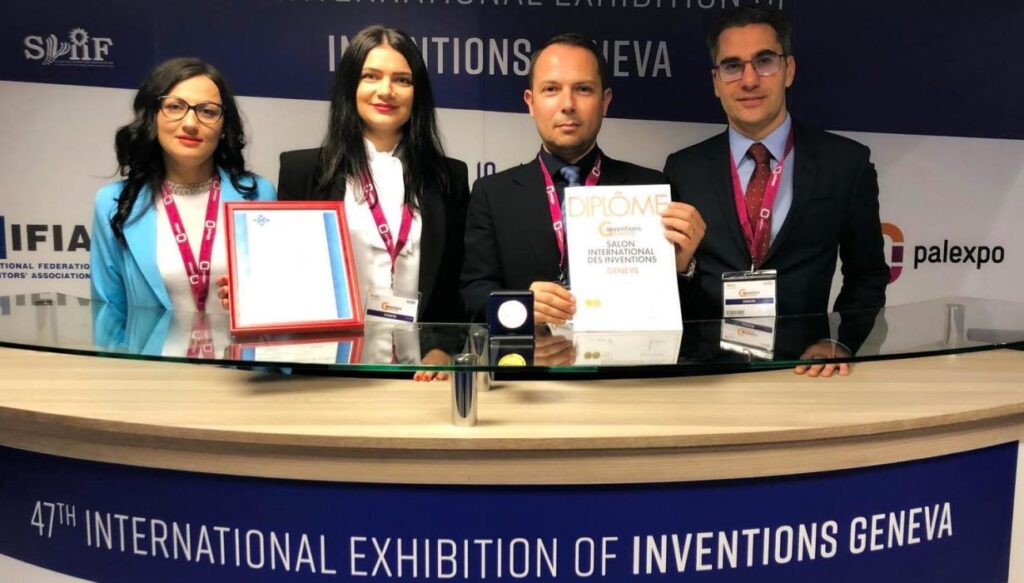Tudor Scripor is an artist by profession, and for much of his life, he painted and taught art. At one point, during one of his courses, a visually impaired student reproached him for not making him understand the concept of color. Seven years have passed since that day, during which Tudor Scripor developed a color alphabet for the visually impaired—a standardized tactilo-graphic representation of colors that he presented at the Geneva Invention Fair, where he received the grand prize.
Last month, he won the Outstanding Leadership Award at the International Education 2.0 Conference in Dubai, which is likely one of the most important events in the education field worldwide.
But Tudor Scripor’s story is much more complex, and his invention deserves all the praise in the world. That’s why I invite you to discover it in just a few minutes of reading.
Tudor, you are the inventor of something extraordinary…
Yes, I have developed an alphabet of colors for the visually impaired and not only. When I say “not only”, I’m referring to colorblind individuals because I was surprised to find that many colorblind people are interested in this alphabet since they cannot distinguish colors. Essentially, it is a combination of dots, an extension of the Braille alphabet.
What you have developed, is it a business or rather a social business?
No, it’s not a business; it’s an innovation, it’s an alphabet. I asked myself that question at the beginning as well. To understand the context, all of this started after I had a visually impaired student in one of my workshops. I was teaching painting and restoration techniques, and he reproached me for not making him understand the concept of color, which, for him, was and still is abstract.
I thought that explaining a painting to a visually impaired person meant providing them with a volumetric description, and that’s what I did. I represented a painting by Grigorescu, replacing wool with cotton and the sheep’s feet with matchsticks. Later, I realized that volumetrics had nothing to do with the concept of color.
I tried to find color codifications used by the visually impaired, but I found nothing. They know that grass is green and the sky is blue; they write in Braille, and that’s it.
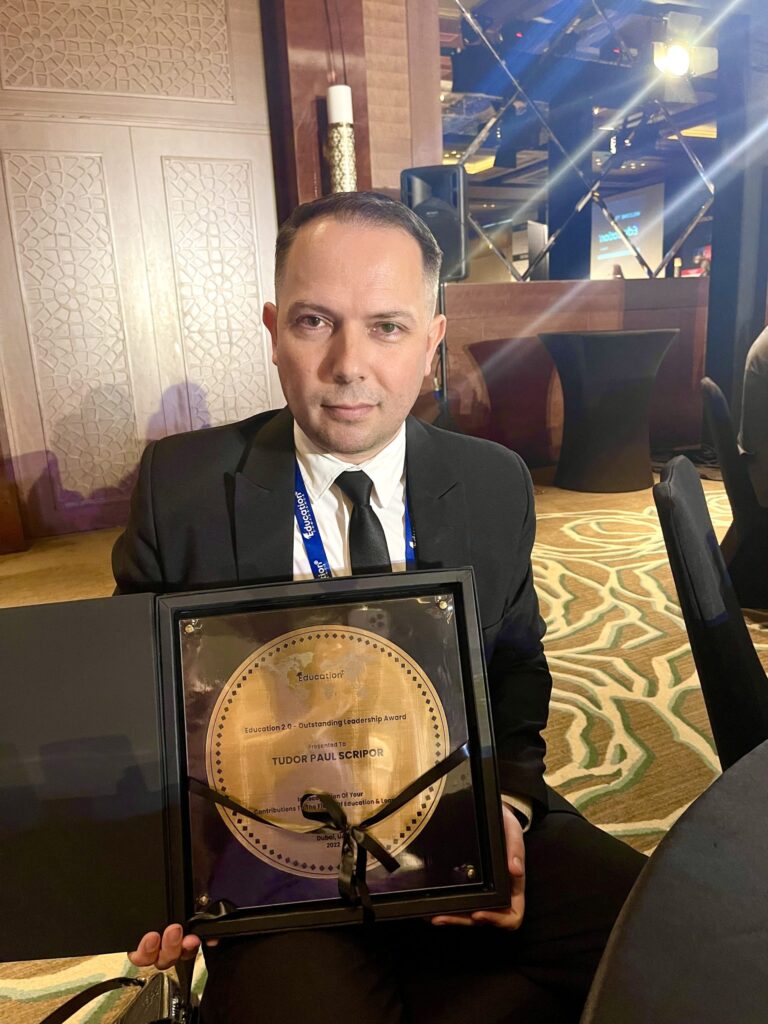
But they don’t know the term “color”…
Exactly. On a Rubik’s Cube, for example, I could have written “red” but that takes up space, and it’s not a universal alphabet. Color is universal. The term “color” is universal. That’s why I call it a tactile-graphic standardization for the visually impaired because I have reduced the word (whether it’s in Braille, written, or spoken in any language) to a single symbol, like an extension of the Braille alphabet. And that’s why it has been so well-received because we learn colors before letters, those of us who can see. Right?
Correct!
Now even the visually impaired will be able to learn colors.
And to answer your first question, my intention was to create a language for them. I worked on this idea for about seven years, and after completing all the tests and research, I went to Geneva with two colleagues whom I brought into the project to present it to the public, but with the goal of protecting our intellectual property.
We didn’t have, and still don’t have, the funds to protect this code globally. But by presenting it publicly, I somehow assumed that I was the first one to invent it.
There, we were pleasantly surprised to find out that this invention had been long-awaited. There had been a long-standing expectation for a chromatic standardization to make a difference. As an example, we can take the case of Nutri-Score, which appeared in our country. Nutri-Score is that colored code found on food products, and when you go to the supermarket, if it’s green, you know it’s healthy; if it’s red, you know it contains salt and fat, and you may avoid it or at least be aware of the composition of that food.
The Vice President of the European Standardization Committee told me that this invention is even more important because it also addresses the needs of the visually impaired, including them now.
To learn your whole story, I’d like to go back a bit to your past. How old are you?
I am 42 years old.

Which city are you from?
I was born and raised in Cluj. I received my education at the High School of Fine Arts, which, ironically or maybe not, was located across the street from the School for the Visually Impaired. Even back in the ’90s, I studied and noticed that they didn’t dress in colorful clothing. That was my first observation. Now maybe they dare to buy and wear colorful clothes, although they don’t know how to recognize them. And here, the alphabet plays a decisive role again.
I assume you continued to study at the Fine Arts faculty. Did this passion for art come from your childhood?
Yes. My earliest childhood memories are with a pencil and a brush in my hand.
What professions do your parents have?
My parents are chemists, and somehow I grew up in the hallways of the Institute of Chemistry. Chemistry and art went hand in hand for me, and towards the end of my university studies, I dreamed of starting a paint manufacturing factory because, in the late ’90s, I encountered significant difficulties in this field. Colors were not available, and the Plastic Fund Combine had a period of pause. I thought it would be great if I could use my knowledge to create painting colors for artists at a decent price. The imported ones were very expensive, and many painters couldn’t afford them. So, I actually started a paint factory that operated for a while, but during the same period, I began working on this alphabet and continued with the chromatic standardization.
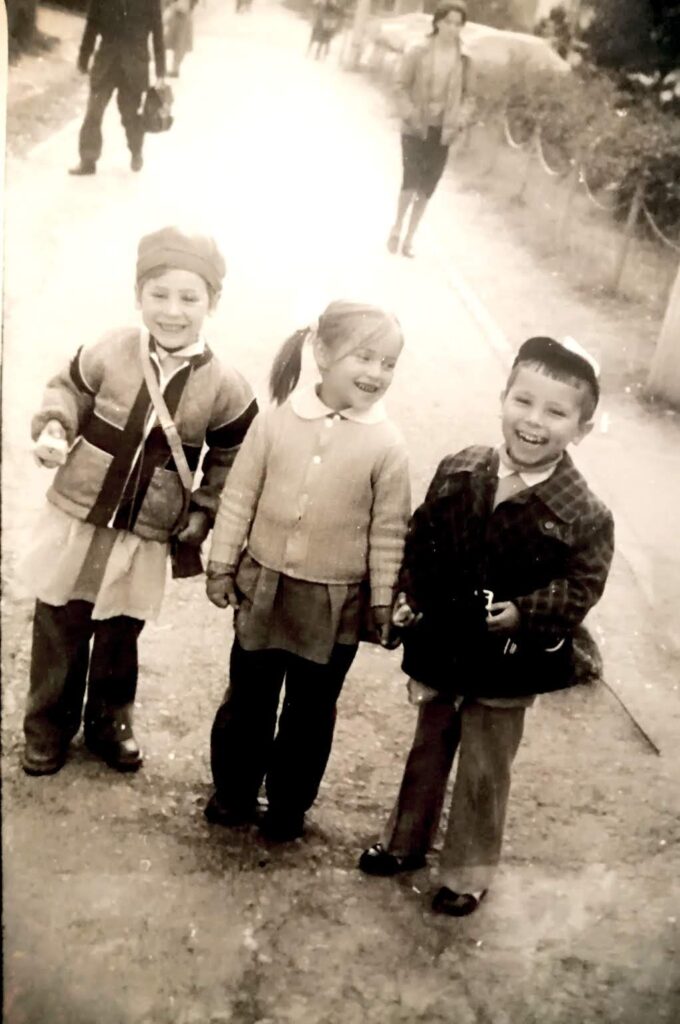
But before that?
Before that, I graduated from the Faculty of Iconography Restoration and painted a part of a church. With the money I earned, I opened a small art gallery. After that, I started the Paint Factory.
Were you also teaching painting at the same time?
Yes, I was teaching. Now I don’t teach anymore. If I have the opportunity, whenever I go to workshops and teach, but not on a constant basis.
I have taught in the United States, conducted workshops in Italy… Somehow, my whole life is closely connected to art.
And why are you still in Romania?
When you asked where I’m from, I wanted to tell you, but I stopped. I was supposed to move with my family to Prague, but this pandemic situation changed our plans a bit. We were well received there, but there will probably be other opportunities. I’m open to them. I’m not tied to a city, a country, or anything. Wherever I go, I do my work well, and I try to bring color into other people’s lives.
I have always loved art and colors, and that’s why I fought so hard to create this standardization. At first, I was not encouraged at all, and people didn’t give me a chance, except for a friend who supported me out of kindness and my wife out of respect. I always heard, “Why do they need colors?”
In a supermarket, I found a box with three peppers. One had “mild” written on it, another had “hot,” and the third had “super hot.” I think for a visually impaired person, this information is impossible to decipher. Through a simple touch, they could know, and I am already in discussions with some Indian chefs who want to apply this code in the kitchen.
I want to be very clear from the beginning: I am not reproducing the gift of colors, nor can I make blind people see colors. Absolutely not. I have managed to create a bridge between the sighted and the visually impaired. For example, the game UNO has numbers and colors. Numbers and colors are universal symbols, and I was surprised to find that two visually impaired people who know the rules of the game, even if they are from different countries, can play this accessible game. And the example continues with rummy…
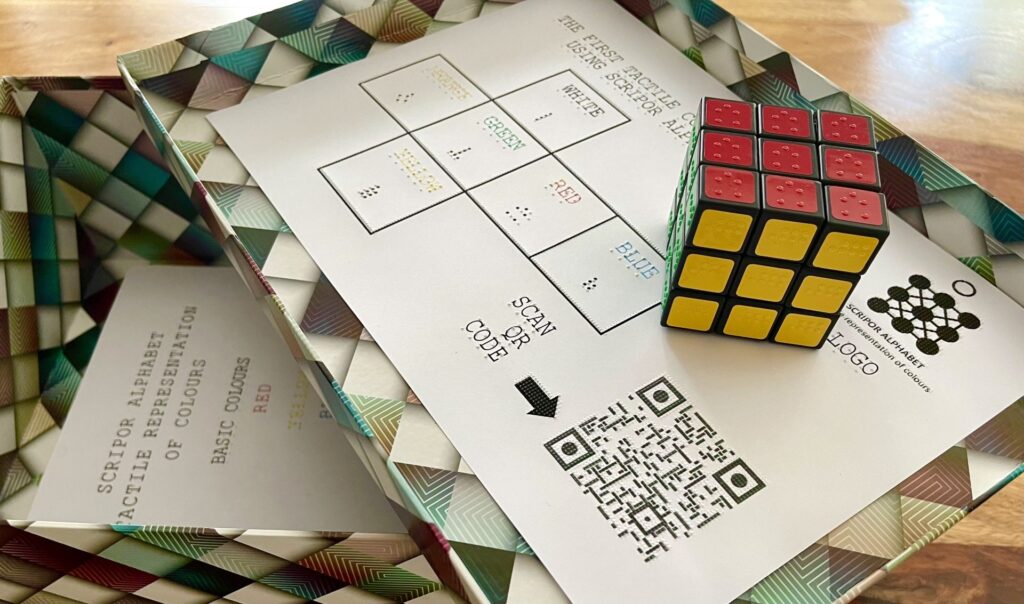
And many other situations in everyday life, I suppose…
Like karate belts. I have already implemented the codes in two clubs, and an international federation is soon to implement them. There are visually impaired individuals who participate in sports. Well, they face challenges when it comes to equipping themselves. They know they have a red belt, but in the locker room, they don’t know which one is red and which one is brown. So the sensei has to remember the color of each athlete’s belt and provide it to them. Now we have eliminated this barrier. The belts have a small tag, and underneath it, there is the color symbol.
We even have a blind Romanian judo champion…
Yes, Alex Bologa.
When did you present your invention in Geneva?
My invention is relatively new; I presented it in April 2019.
What did you come back from Geneva with?
I came back with a bag of materials and received a gold medal and the grand prize from the German Inventors Association. The award was presented to me by the president of the European Inventors Association himself. This prize is rarely given and is awarded to inventions that have a significant impact on society. When he handed me the award on stage, he urged me not to let this invention go unnoticed, to ensure it reaches the recipients because otherwise, all my work would end up forgotten in a file on a desk, which would be a great shame for so many people.
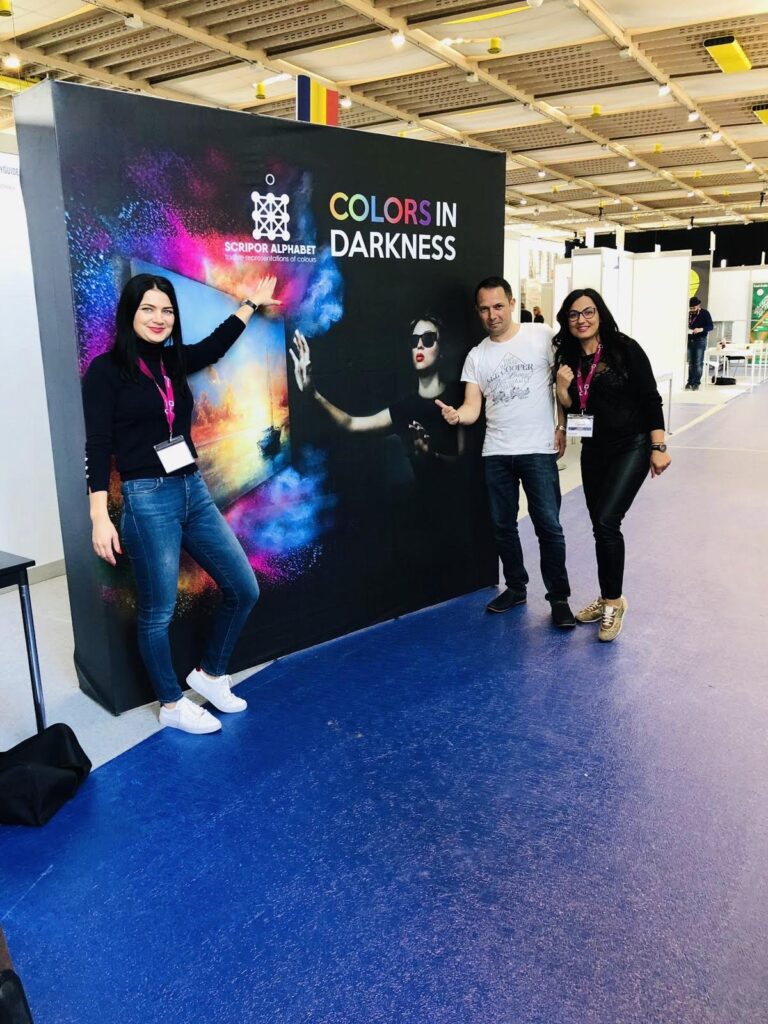
Where did you get the funds to work on this invention for seven years?
During these seven years, I went through a quite challenging period in my life, I tell you honestly, without hiding anything. There were also many failures, wrong directions I was taking with the project. I got a library subscription, searched, read, tested, asked people – everything was done with my own resources. At one point, I had to get a job because I had a company, I partnered with the wrong person, and I lost everything. So, I started from scratch, got employed, and worked on this invention in my free time. And to gather funds for the patent, I even did cleaning jobs. The company I was working for decided to let go of their cleaning staff, and I started doing the cleaning work for much less money. And once I finished the invention, I decided to resign, and everyone, including my boss, told me I was foolish, that I had a family and should think about the future. I just wanted to save money to present it publicly, together with the two colleagues I met in the final stages of research. One is an intellectual property lawyer and was collaborating with the other in this field. They believed that in my endeavor, I really needed support in terms of intellectual property because anything you produce needs to be protected. I went to Geneva with them.
We didn’t know it was like an Olympics. When you hear “invention fair,” we thought you just put your invention on a table and the problem is solved. But no. There are two international juries consisting of specialists who analyze the invention, and you have to present the entire history, applicability, and a complete documentation behind it.
What are you planning to do now? Implement this invention?
Exactly!
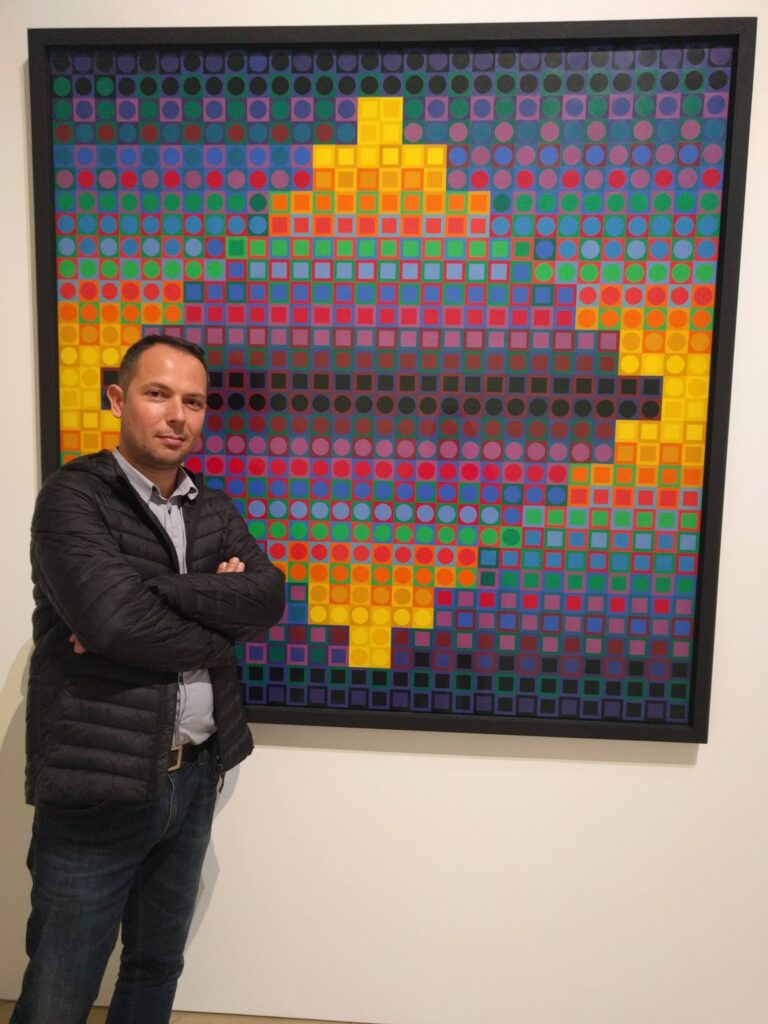
I guess they are huge steps in a million directions…
Very true! Around us – when I say that, I mean that we have created an association, an NGO, and an LLC to operate legally – many people have already gathered. Of course, we have educational projects as well as commercial projects. Indeed, there are a thousand directions opening up because if there are 1,000 visually impaired individuals, each one comes up with a different application. For example, games, Christmas ornaments, recycling methods, sports, leisure activities – there are many domains, and we won’t take money from the beneficiaries – as you asked at the beginning if it’s a business – because that’s not the purpose for which the Color Alphabet was created. We want to offer the right to use to companies that produce these objects.
Shouldn’t the companies pay because you need to make a living too, right?
Exactly! The amounts are not exorbitant to bankrupt companies. In fact, everyone benefits from it. The companies are obligated by the European Commission to support accessibility, we benefit because it supports our activities and allows us to develop educational and social programs, and the visually impaired individuals benefit because they gain access to a world that was previously closed to them. Color was a relatively abstract term for them.
How can this be implemented globally? I suppose everyone on the planet needs your invention…
That’s right! Here I have one regret. If I were born in another country, things would have been completely different. The speed at which a country like Switzerland or the USA moves, or even Spain where there are strong associations for the visually impaired pushing for innovation and showing their support, would have been different. Unfortunately, in Romania, things move slower, and it’s equally difficult to find people who understand this innovation and the benefits it offers.
You know that studies have been conducted in Romania that show that visually impaired individuals, as well as the majority of people with disabilities, don’t leave their homes out of fear and apprehension of what might happen?
I didn’t know about the studies, but I knew the reality.
Have you met that particular student who caught your attention?
No. I would be glad to meet him, but I have no contact information. It happened in America in 2012. I will have to search for him when I go there again. He is at the top of my list to contact and shake hands with. He gave me negative feedback, but I turned it into an invention with unlimited possibilities.
What did your wife say?
My wife said she knew I would succeed because when I set my mind to something, I see it through. I am an artist at heart, and I love colors. I cannot conceive of a world without colors, and the motivation behind this was that I wanted everyone to know the colors. I can’t make them see them, only God can restore their sight, but there are less than 10% of visually impaired individuals who are completely in the dark. The rest have lost their sight during their lives and thus have an idea of colors.

Did you have any visually impaired individuals in your family?
No. My great-great-grandfather, who fought in the War of Independence, returned from the war blind. He would be the only case, but I never met him.
What’s funny and interesting is that after I finished working on this invention, I tried to register it. These girls asked me for the documentation so that we could register it at OSIM, at the European level, and then globally. The first thing was that we had to give a name to this alphabet. Each of them had the task of coming up with 5 or 10 names, and we would meet weekly to discuss. After about three weeks, we had to register because otherwise, we wouldn’t have time to go to Geneva. Adina said, “I got it: Morse has the code named after him, Braille has the alphabet named after him, all inventions carry the name of the inventor. So we have to give it your name.”
At that moment, I thought, “Wow! I have children, I have a family, what will my wife say? It’s a huge exposure.” The Scripor Alphabet is the tactile-graphic standardization of colors, and that’s how it remained. I told my wife that this is our destiny, and we have to embrace it. When we went to Geneva, the president of the European Inventors Association started asking me questions and said, “The name is so cool. It has the word ‘script’ included, which means ‘to write’ in Latin, in any alphabet.” The girls laughed and said, “That’s not what it means. It’s actually your name, the name of the inventor.” “Well, if I had any doubts, this is the final argument to give you the grand prize.”
Perhaps our children’s generation will witness the moment when the color alphabet is present on all products…
When I think that it took Louis Braille 100 years for his alphabet to be introduced in schools…
Ironically, Braille faced the greatest obstacles from the visually impaired themselves because the directors and teachers at the institute where Braille was a professor did everything they could to hinder the implementation of the Braille alphabet. They feared that visually impaired individuals would become too independent, and they could lose their jobs. That was in the 1800s. You can imagine that things haven’t changed much in our time. However, we are using technology, and communication is much faster now.

